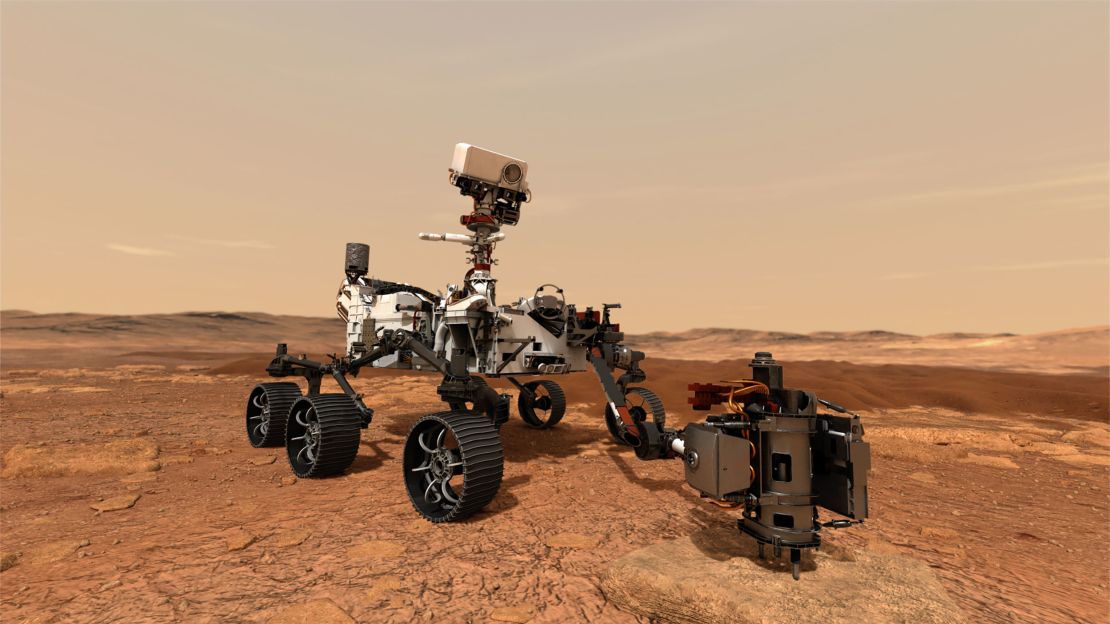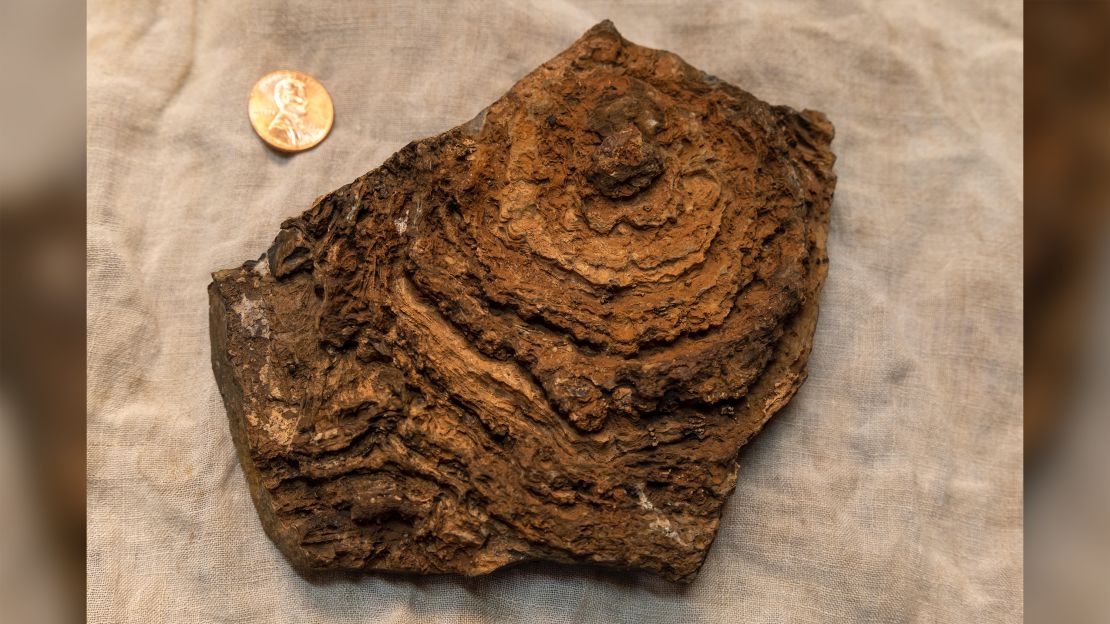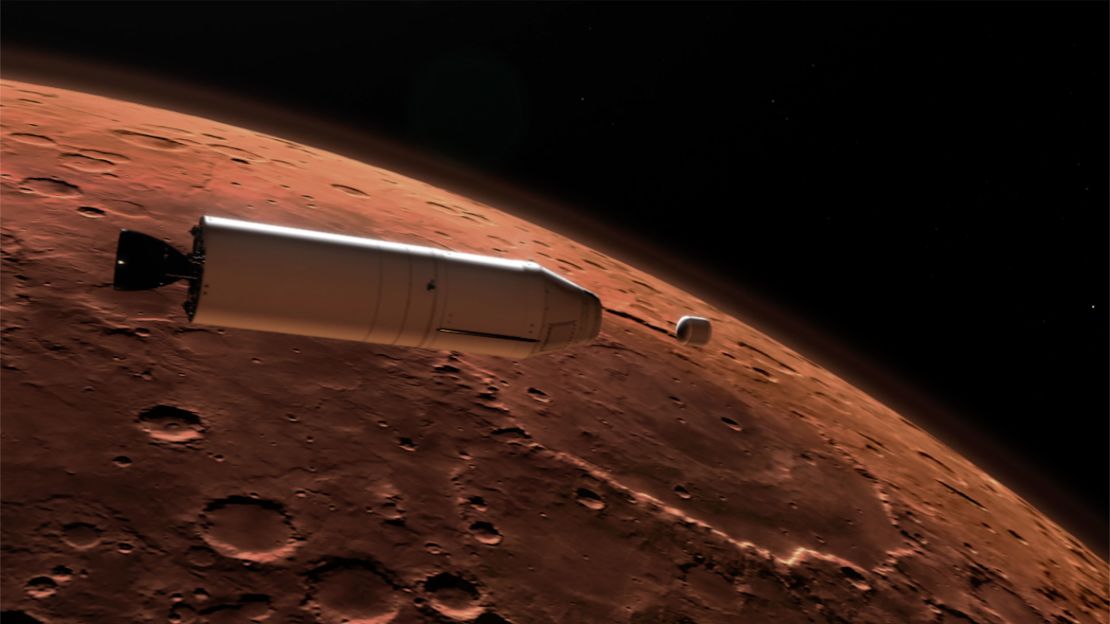When NASA’s Perseverance rover begins surveying the Martian surface in the coming months, the robotic explorer will be searching for signs of ancient life. Then, “Percy,” as she’s known to her team on Earth, will actually collect those samples, and future missions will return them to Earth.
Perseverance is NASA’s first true astrobiology mission in the search for evidence of life on another planet in our solar system.
The rover is looking for clues that will help answer a question that has intrigued humans for millennia: Is there life beyond Earth?
While samples from Mars could reveal the planet’s past, future missions to other intriguing worlds in our solar system could illuminate something else. In 2017, NASA announced that ocean worlds, like Saturn’s moons of Titan and Enceladus and Jupiter’s moon Europa, may be the most likely places to find life beyond Earth.
Two missions are scheduled to launch this decade to explore Titan and Europa in an effort to understand if these intriguing worlds could host life within their subsurface oceans and reservoirs. Europa Clipper is set to launch in 2024, while Dragonfly is slated for 2027.
“Perseverance will get people thinking in terms of astrobiology and the strategy of looking for signs of past life,” said Jorge Núñez, astrobiologist at the Johns Hopkins University Applied Physics Laboratory, who is working on teams for both Perseverance and Dragonfly.
“Missions to outer planets, like Europa and Dragonfly, will take a lot of time. But we have to be open to what we might be able to find in terms of possibilities for life. These missions are part of this strategy in trying to understand how environments evolve. Is life a more common thing, or is it rare? And what is out there?”
Searching for ancient fossils on Mars
Currently, Mars seems like an inhospitable place for humans – and its global dust storms haven’t been too kind to previous rovers, either. The planet is a frozen desert with a thin atmosphere. It’s hard to imagine life existing there.
However, 3.9 billion years ago, it was a different story.
Jezero Crater, where Perseverance has landed, was once filled with water and may have been surrounded by white sandy beaches, as indicated by a “bathtub ring” of minerals left behind in the dry lake bed today. A river delta fed in to one side of the lake and another river channel of overflow from the lake emerged on the other side.
For the next two years, Perseverance will traverse the crater floor and river delta, studying rocks, minerals and dirt and their chemical compositions. Microfossils of ancient microbial life could be trapped inside of them.
“We study the formation, preservation and detection of signs of life and planetary evolution in geologic samples,” said astrobiologist Ken Williford, the deputy project scientist for the Perseverance rover.
“The instruments on rover missions are sort of portable versions of instruments we have in labs like mine and other labs that work on ancient rocks and measure the chemistry and shapes preserved in them,” added Williford, who is also the director for the abcLab at NASA’s Jet Propulsion Laboratory in Pasadena, California. The “abc” in abcLab is short for astrobiogeochemistry.
Rocks are a wealth of information, preserving notes from when they were formed. They include clues about chemistry, climate change and if organisms were present.
While much of the lab work focuses on Earth, this approach can also be used to interpret possible signs of life elsewhere, like Mars.
Using Perseverance’s advanced suite of instruments and cameras, the science team on Earth will have their best look yet at rocks on Mars that could reveal the planet’s past.

“We’re looking for lifelike compositions and shapes that occur together,” Williford said. “Carbon-based life is made of organic matter. They fossilize, get buried, squished and squeezed and turned into organic goo like oil or coal.”
This goo ends up in rocks, so “ancient organic matter may be the very old bodies of Martian microbes,” he said.
Scientists aren’t expecting to find fossils like those belonging to dinosaurs on Mars, but microbial life is a much better possibility if it ever existed on Mars.
Just look at Earth. Microbial life existed for a long time before more complex types of life evolved. In Earth’s earliest fossil record, scientists study fossilized pond scum rather than bones or shells.
Fossilized pond scum is basically a group of photosynthetic bacteria that stuck to sediment, forming microbial mats. After the water in their environment dries up, the minerals are left behind and entomb those microbes, forming stromatolites.

Stromatolites are the oldest fossils on Earth. These layered rocks can be traced back 3.5 billion years ago.
“It would be exciting if we find wrinkly layers of rock that looks like stromatolites on Mars,” Williford said.
Williford is most excited for Perseverance to explore the edges of the ancient lake, where water met land.
“Every boundary is important,” he said. “Life loves to live at interfaces, where there is disequilibrium and things are a little out of balance. Life thrives at those areas and hopes to put them into balance.”
Even if NASA researchers use Perseverance’s instruments to measure the chemical composition and patterns of the rocks and then find suggestions that life may have been involved in the formation of them, these are only potential biosignatures.

Returning samples of them to Earth and studying them with bigger, better and more powerful instruments in environments like the abcLab is the best way to confirm evidence of past life on Mars, if it ever existed, Williford said.

Much like when the first lunar samples were returned to Earth in 1969 following the successful landing of the Apollo 11 mission, returning samples from Mars will lead to a “transformative scientific revolution,” he said.
On the wings of Dragonfly and Europa Clipper
The Dragonfly mission won’t reach Titan until 2035, given the extraordinary distance between Earth and Saturn, but it’s worth the wait.
Dragonfly will be a rover-size drone that flies through Titan’s thick atmosphere to observe the moon’s diverse environments, which include a subsurface liquid water ocean, as well as clouds, rain, rivers and lakes composed of methane.
Titan is the only moon with a thick atmosphere, which is four times more dense than Earth’s. The moon is also rich in organic material, which falls from the atmosphere like snow on the plains.
The icy moon has an average surface temperature of negative 290 degrees Fahrenheit.

Scientists know that complex organics are present on Titan, but how much did this prelife chemistry progress? There are building blocks of life on Titan that are very similar to what was once present on Earth before life began.
“Titan is similar to Earth in the sense that it has an atmosphere and hydrological cycle but it’s a cycle of natural gas, like methane and ethane,” Núñez said. “But you still see similar features. Besides this organic chemistry right on surface, we have this atmosphere of natural gas. Reactions from the sun makes these chemicals that are more complex. Dragonfly is looking for prebiotic chemistry.”
Underneath the moon’s icy shells is a liquid water ocean. Holes in the ice shell suggest that organics from the surface could be interacting in the water.

While life has expanded everywhere on Earth for billions of years, erasing just where life originated exactly, Titan is different.
“Titan is a natural laboratory that allows us to explore how that initial chemistry came into being,” Núñez said.
Europa is another icy moon possibly concealing a subsurface ocean, and Europa Clipper will explore if that ocean could harbor life. Across 45 planned flybys of Europa, the spacecraft will eventually move from 1,700 miles from the surface to just 16 miles above it.
The spacecraft will orbit Jupiter to study Europa and carry nine instruments, including cameras and ice-penetrating radar, to study the moon’s ice shell and ocean.
Previous missions have spied plumes erupting up through the ice shell.
“Europa is the most likely place to find life in our solar system today because we think there’s a liquid water ocean beneath its surface, and we know on Earth everywhere that there’s water we find life,” said Robert Pappalardo, mission project scientist, in a NASA video.
“Could Europa have the ingredients to support life? If there is life in Europa, it almost certainly was completely independent from the origin of life on Earth. That would mean the origin of life must be pretty easy throughout the galaxy and beyond.”
If the plumes captured in images by the Hubble Space Telescope are truly sending columns of water high into space, “then we could fly through those plumes with a spacecraft and literally taste it to understand the composition of Europa’s interior,” he said.
Europa is so intriguing because life could potentially still be present.
“We might be actually looking at a body that is presently alive, presently active and presently undergoing its geology,” said Claudia Alexander, Galileo mission project manager between 1999 to 2003, in a NASA video.
“There is too much evidence right now lying around on the surface, the red stuff, that suggests something’s going on there. Is that an environment that is habitable for any sort of life form? We’ll have enough instrumentation to really pinpoint exactly how the mechanisms would work for replenishing the nutrients in a subsurface ocean.”





